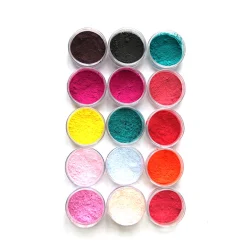Key points about cadmium pigments
2024-02-27
Cadmium pigments are a group of inorganic pigments that contain cadmium as a major component. These pigments are known for their vibrant and stable colors, making them valuable in various applications, particularly in the fields of art, ceramics, plastics, and coatings. Here are key points about cadmium pigments:
1. Color Range:
- Cadmium pigments are available in a range of colors, including yellows, oranges, reds, and maroons. The specific hue depends on the concentration of cadmium and the manufacturing process.
2. Cadmium Sulfide and Cadmium Selenide:
- The main compounds used in cadmium pigments are cadmium sulfide (CdS) for yellow and orange pigments and cadmium selenide (CdSe) for red and maroon pigments.
3. Color Intensity:
- Cadmium pigments are known for their high color intensity, opacity, and brightness. They produce vivid and saturated colors, making them popular choices for artists and designers.
4. Lightfastness:
- Cadmium pigments are highly lightfast, meaning they resist fading or changing color when exposed to light. This property makes them durable and suitable for outdoor applications.
5. Chemical Stability:
- Cadmium pigments exhibit chemical stability, which contributes to their longevity and resistance to chemical reactions. This stability is advantageous in various applications.
6. Applications in Art:
- Artists use cadmium pigments in oil paints, acrylics, watercolors, and other artistic mediums. The pigments provide a wide range of warm, intense colors that can be easily mixed to create different shades.
7. Ceramics and Glazes:
- Cadmium pigments are employed in the ceramics industry for creating vibrant glazes and ceramic colors. The pigments contribute to the production of rich and durable ceramic finishes.
8. Plastics and Polymers:
- Cadmium pigments are used in the coloring of plastics and polymers. They are valued for their ability to provide consistent and stable colors in various plastic applications.
9. Coatings and Paints:
- The durability and color stability of cadmium pigments make them suitable for use in coatings, including industrial coatings, automotive paints, and architectural paints.
10. Regulatory Concerns:
- Cadmium is a heavy metal, and its use in pigments has raised environmental and health concerns. In some regions, there are regulations restricting or banning the use of cadmium in certain applications, particularly in consumer products and children's toys.
11. Alternatives:
- Due to regulatory concerns, there has been a push to develop and use cadmium-free pigments. Various alternatives have been developed to replicate the colors of cadmium pigments without the use of cadmium compounds.
12. Safety Considerations:
- Artists and manufacturers working with cadmium pigments should be aware of safety precautions. Direct contact with cadmium pigments, particularly in the form of dust or powder, can pose health risks, and appropriate safety measures should be taken.
While cadmium pigments offer excellent color characteristics, their use is being reconsidered in certain applications due to environmental and health considerations. Artists and manufacturers are increasingly exploring and adopting alternatives that provide vibrant colors without the use of cadmium compounds.



